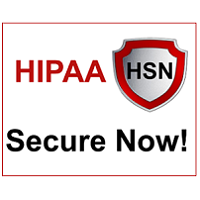 By Art Gross, President and CEO, HIPAA Secure Now!
By Art Gross, President and CEO, HIPAA Secure Now!
Twitter: @HIPAASecureNow
Read other articles by this author
While we have all had to adjust in obvious ways to the pandemic, the reality is that after the panic subsides, and after the immediate emergency vibe in the air passes, we will never return to the way things once were. We are in a new reality, or as many keep saying, a new normal.
Telepresence
Some things are more obvious than others. As a patient you will likely be affected by the process in which you are treated, that is something we all expect. But as a healthcare employee, you may see the changes come about in different and varying ways. For example, it will likely be the companies that had a strong telepresence or infrastructure that survive or continue without much of a bump in the road. If your business did not have those in place previously, look for them to create remote working options, online features for patient care, and to review and create a stronger cybersecurity plan. A telehealth, or digital care plan for all patients has become a requirement of today’s healthcare facility, not something you’ll perhaps have “one day”.
Policies & Procedures
There will be reviews and analysis of exposed risk factors when it comes to all procedures. The protection won’t be limited to physical exposure, but also online activity. Increased security measures with additional login requirements, an established plan for breach response, the addition of cyber insurance to your coverage – these are all business policies and procedures that SHOULD be in the process of being curated if they weren’t already present.
Preparation Is Key
Readiness should also be at the forefront of providing physical care should the second wave of COVID-19 arrive. Mentally, we may be more ready, but are we able to provide the care that is necessary if it should be worse than the first round? Will we be able to accommodate the elective surgeries that have been sidelined as a result of this? Those patients will need to feel assured that if they enter a hospital with a high rate of infection, they will be safe.
Our supply chain was not up to par when it came to having the expected number of masks and respirators. While the point can be argued as to whether or not they were needed or available and not dispersed quickly, we do know that in a worst-case scenario, we would not have been able to respond accurately. Now that light has been shed on that issue, let us hope that this would not be a factor again.
We may have found comfort in the “old school” style of medicine and care, but sadly those types of businesses may have fallen victim to this pandemic much easier and found their survival less likely. While human interaction and care should never go by the wayside entirely, we should expect to see more robotic options created for safe treatment. It’s important for all organizations to have the proper plans, procedures, tools, and cybersecurity infrastructure in place should a pandemic or another type of emergency occur in the future.
This article was originally published on HIPAA Secure Now! and is republished here with permission. HIPAA Secure Now offers annual online subscriptions to help covered entities and business associates keep up with compliance. Learn more here.
 HIPAA Secure Now! now offers PHIshMD training for CEs and BAs to help protect your organization from security threats.
HIPAA Secure Now! now offers PHIshMD training for CEs and BAs to help protect your organization from security threats.
Technology safeguards put a virtual wall around your network, but what happens when the bad actors climb over that wall? It’s up to your employees. Over 90% of breaches get caused by human error according to Kaspersky Lab, and if you’re not educating users HOW to protect your organization in this ever-changing threat landscape, your organization could be next. LEARN MORE
